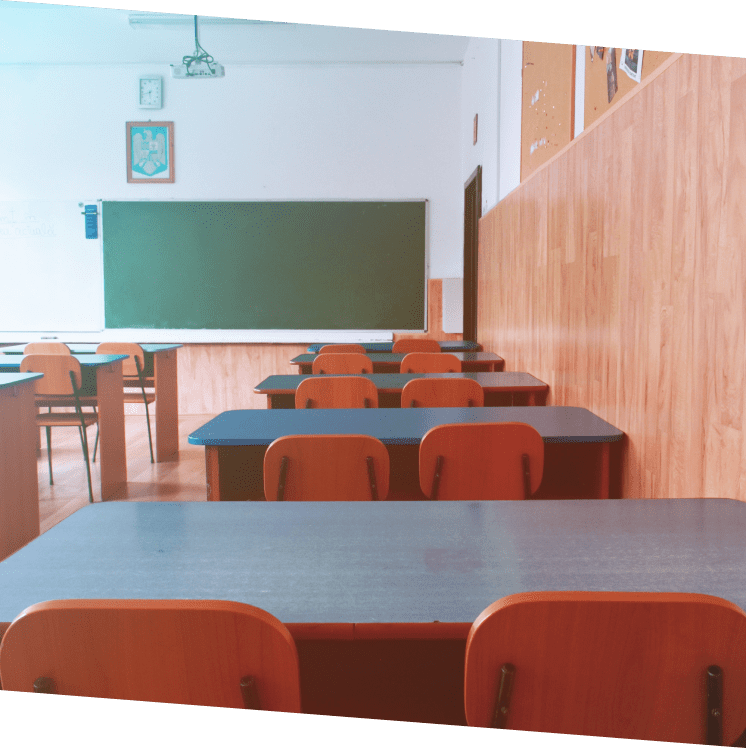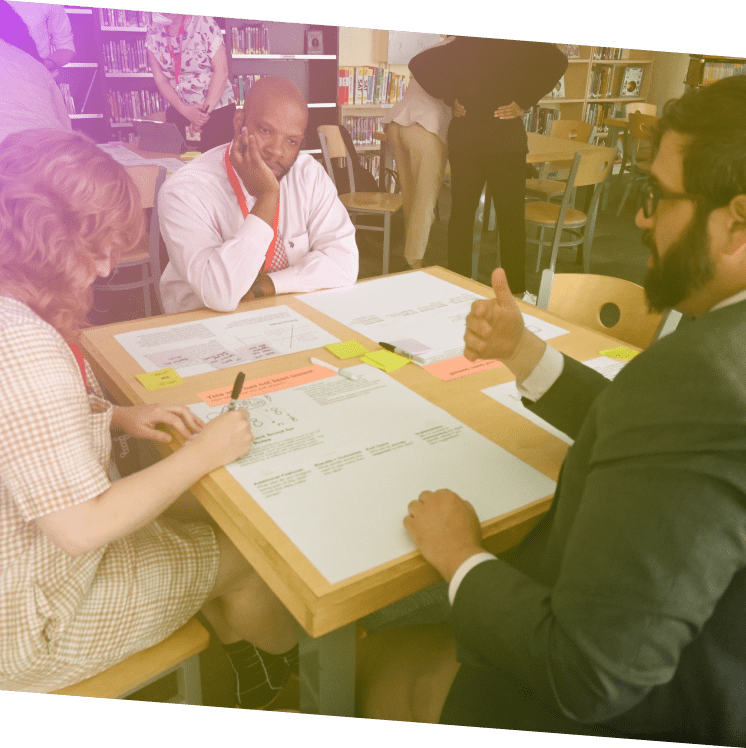Reshaping St. Louis Education Through Systems Science
An Intractable Problem:
Systemic Educational Challenges in St. Louis
St. Louis educators face a complex challenge – a dwindling student population, heightened needs, and shrinking budgets. There are individual stories of joy and growth for some students and educators in St. Louis. However, to keep our schools thriving well into the future, we must address pressing systemic challenges.
Families with resources tend to opt out of public schools (district and charter) in St. Louis leaving behind a strained system. The economic fallout and misconceptions about safety exacerbate funding challenges resulting in school closures, competitive student enrollment tensions, and further exhausted resources. This complicated structure perpetuates problems for students and educators and requires system-oriented solutions and change efforts.

Misperception Contributes to Underfunding

Rigid Systems
Hinder Progress

Overwhelmed and Under-Resourced
But beneath these interconnected challenges lies opportunities for building shared understanding and collaborative problem solving.
Navigating Complexity:
System Dynamics for Education
Traditional solutions fail to address root causes and affect system-wide change. In response, local school leaders and SKIP Designed conducted a Community-Based System Dynamics process in pursuit of systemic change.
Understanding the System:
Key Insights
A Declining Population in St. Louis City Challenges Learning Improvements
Funding for schools is tied to population. As population declines, so does funding; leaving fewer dollars to pay for legacy costs (e.g. buildings) and meet the needs of students who remain. This creates a vicious reinforcing cycle where as school performance declines, student enrollment declines, dollars decline, and fewer dollars are available for school operations, leading to a decline in school improvement.
Adjusting funding allocation can effect change, but it must be done on a large scale to have an impact
Though student enrollment decreases, school buildings remain open. These buildings are saddled with fixed costs including building maintenance, utilities, and administration, but with fewer dollars to support it. The system could reduce costs through interventions such as combining and re-envisioning schools. However, based on the system dynamics model, this intervention is beneficial if implemented on a large scale in a short amount of time. While this may help stabilize the education system financially, the side effects of this change have potentially negative consequences for neighborhoods, families, and educators. Any intervention must be carefully mitigated and planned for so that existing neighborhood challenges are not created or exacerbated.
See this research on the racially inequitable impact of St. Louis school closures to neighborhoods by Ebony Duncan-Shippy for reference. Without considering how and where resources are allocated, changes that may intuitively feel like they will lead to positive outcomes can have unintended consequences. For example, increasing teacher pay can harm overall system performance if not paired with overall funding increases. Increasing teacher pay means fewer dollars for key school operations which affects school performance. In a system where we maintain our current costs, teachers’ pay increases should be funded through additional dollars to the school system to avoid this unintended consequence.
Shifting the System to Grow Educating Capabilities
Educating capabilities describe the collective expertise, skills, and alignment across a system of schools. They are intangible strategic assets that school systems use to maximize their ability to achieve goals. They can include expertise, activities, information, knowledge, procedures and processes, systems, technologies, or unique adaptive features. Not to be confused with an individual’s educating competencies, educating capabilities focus on the organization as a whole.
Increasing the degree to which schools allocate resources towards building internal development programs for long-term organizational capabilities like leadership, communication, and mindsets is an important leverage point. Investing in this policy changes how schools respond to performance shortfalls with their short-term (i.e., working harder) versus long-term strategy (i.e., working smarter). This may lead to dips in short-term performance as educators reallocate energy away from immediate needs. However, in the long-term, this strategy increases schools’ overall capacity and supports more students, reduces teacher burnout, and creates a sustainable system.



